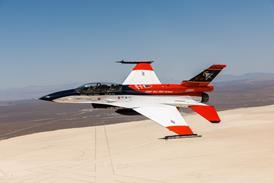Story updated to reflect clarification that expected incremental revenues are attributed to fare bundling initiative.
Calgary-based WestJet has encountered issues with the soft launch of its new Plus seating product and is working to resolve them ahead of an official roll-out planned for 17 August, says the airline's chief executive Gregg Saretsky.
"With the benefit of hindsight, I'd say we made two big mistakes," he tells investors during a 30 July earnings call.
"One, we didn't differentiate the brand in the cabin, so to the uninformed guest, the Plus section looked just the same as any other section." he says.
As a result, customers were sitting in the seats with the extra pitch because it was not clear that the Plus seats were different than the standard economy offering, he says.
"The second thing is, we really didn't tell guests what Plus was all about," he says. "It was a soft launch, so they got on board, they didn't know what it was, the cabin wasn't branded, they saw the empty seats there and they just thought they'd sit themselves down and take advantage of some of the extra elbow room," he says.
As a result, he says that flight attendants were put in a "very awkward and untenable position" where they had to either tell the customers to move or charge them an upgrade fee for the seats.
"It wasn't pretty, we apologise to our guests and our flight attendants for that, but we'll have that fixed for August 17," said Saretsky.
One way of clearing up the confusion is by differentiating the Plus section of the cabin with different types of furnishings to show that the section is different than regular economy. These changes will be implemented on the aircraft for the official 17 August roll-out and introduced with other perks such as free food and drinks, says WestJet's chief executive.
WestJet has also chosen to remove the six emergency exit-row seats from its dedicated premium economy fare offering but will sell them in advance through its website as part of a regular fare to allow more people access to the 36in pitch the seats provide. The standard seat pitch on WestJet's Boeing 737 fleet is 31 or 32in.
The premium economy section will now be comprised of three rows with 18 total seats instead of four when the emergency exit seats are kept as a part of the regular cabin.
WestJet says that shortly after the 17 August launch it will start selling upgrades of unoccupied Plus seats 24 hours in advance of each flight. These prices of the seats will vary depending on how many other Plus seats have been filled, the stage length of the flight and the route, says Bob Cummings, WestJet's vice-president sales, marketing and guest experience.
"From a revenue management and pricing perspective, we will be endeavoring to fill as much of those 18 seats as possible," says Cummings, noting that WestJet has a goal of filling at least six of the 18 seats with people on each flight.
WestJet is expecting its fare bundles to produce C$20 million ($19.4 million) to C$30 million in incremental revenues in 2013 and between C$50 million and C$80 million annually once fully rolled out.
In April, WestJet did a quiet launch of its new three-tier fare bundling programme and offered the Plus seats through same-day upgrades for a fee starting at C$45. It has been waiting to officially launch the premium economy section until it finished the second phase of a technology upgrade.
In November, WestJet announced it would complete its seat configuration project by the first quarter of 2013 instead of the end of 2012 as previously planned, and the airline announced that the retrofits had been completed in March 2013. However, it has waited to officially offer the premium economy seats until completing the last phases of the new technology behind the three-tier system, which includes varying levels of flexibility. The no-frills "econo" fare is the least expensive, followed by the mid-level "flex" fare. The "plus" fare seats offer maximum flexibility and are targeted at business travellers.
Source: Air Transport Intelligence news
















